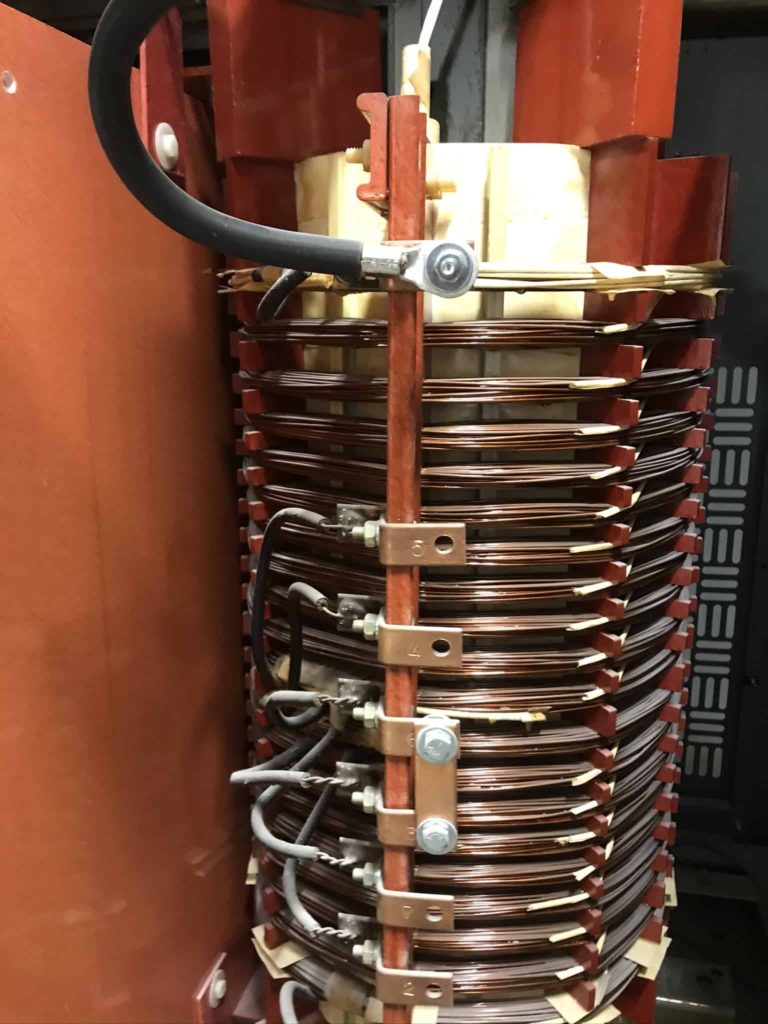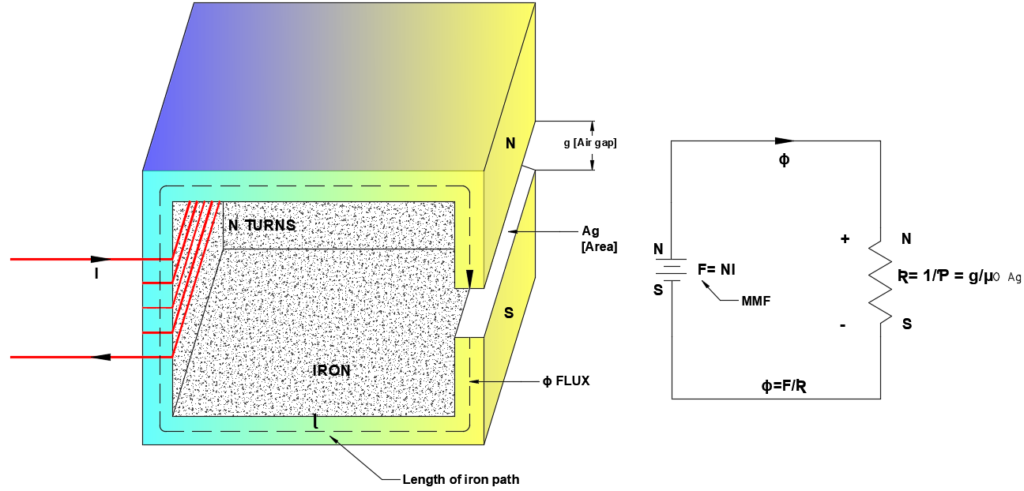Terminology:
Magnetic Flux: The total flow of a field is called its flux. Example total light emitted from a source is called luminous flux.

Light fields radiate outwards while magnetic fields always circulate. Flux can be thought of as lines of fields. The old unit for magnetic flux is ‘line’ or ‘Maxwell’. SI unit for magnetic flux is weber (Wb).
1 weber (Wb) = 108 Maxwell
The symbol for magnetic flux is ø.
Magnetic Flux Density: Flux per unit area is defined as ‘B’ or magnetic flux density. Unit of flux density is tesla (T)
1 Tesla (T) = 1 Wb/m2
Ampere Turns: is the product of current multiplied by the number of turns of coil. A direct current of one ampere flowing in a single turn loop in vacuum produces 1AT. No particular unit has been assigned in SI system though ‘AT’ is usually used. More number of turns with a given current produces larger ampere turns.
Consider a magnetic circuit as shown below. Electrical analog of the magnetic circuit is also shown.

Magnetic analog of electrical resistance is reluctance Ʀ while the analog of electro motive force (EMF) is magnetomotive force (MMF) with a symbol Ϝ and analog of electric current is flux ø. Magnetic analog of electrical conductance is permeance Ƥ.
Flux is given by dividing MMF with reluctance in the same way current is given by dividing EMF with resistance.

Resistance of wire of length Ɩ, cross-sectional area A and conductivity is given by:

Reluctance of magnetic material length Ɩ, cross-sectional area A and permeability is given by:

Similarly, the reluctance of the air gap shown in the picture above is given by following. Here ‘g’ is the air gap and is the permeability of air which is equal to H/m.

Flux in the air gap is given by:

If fringing flux is neglected flux density (flux per unit area with unit of wb/m2) is given by:

Quantity Ϝ/g is called field intensity H with units of ampere per meter (A/m).

Observations along the air gap:
*Flux in air gap is directly proportional to air gap area Ag and inversely proportional to gap length ‘g’. Larger area produces more flux while larger air gap produces smaller flux.
*Larger current produces more MMF (Ϝ) and hence more flux through air gap.
*Flux density H is directly proportional to ampere turns and inversely proportional to air gap.
*Larger flux can be driven through a given magnetic material by reducing its reluctance. Reluctance can be reduced by increasing the permeability of the material, decreasing the magnetic circuit length and increasing the core area.
